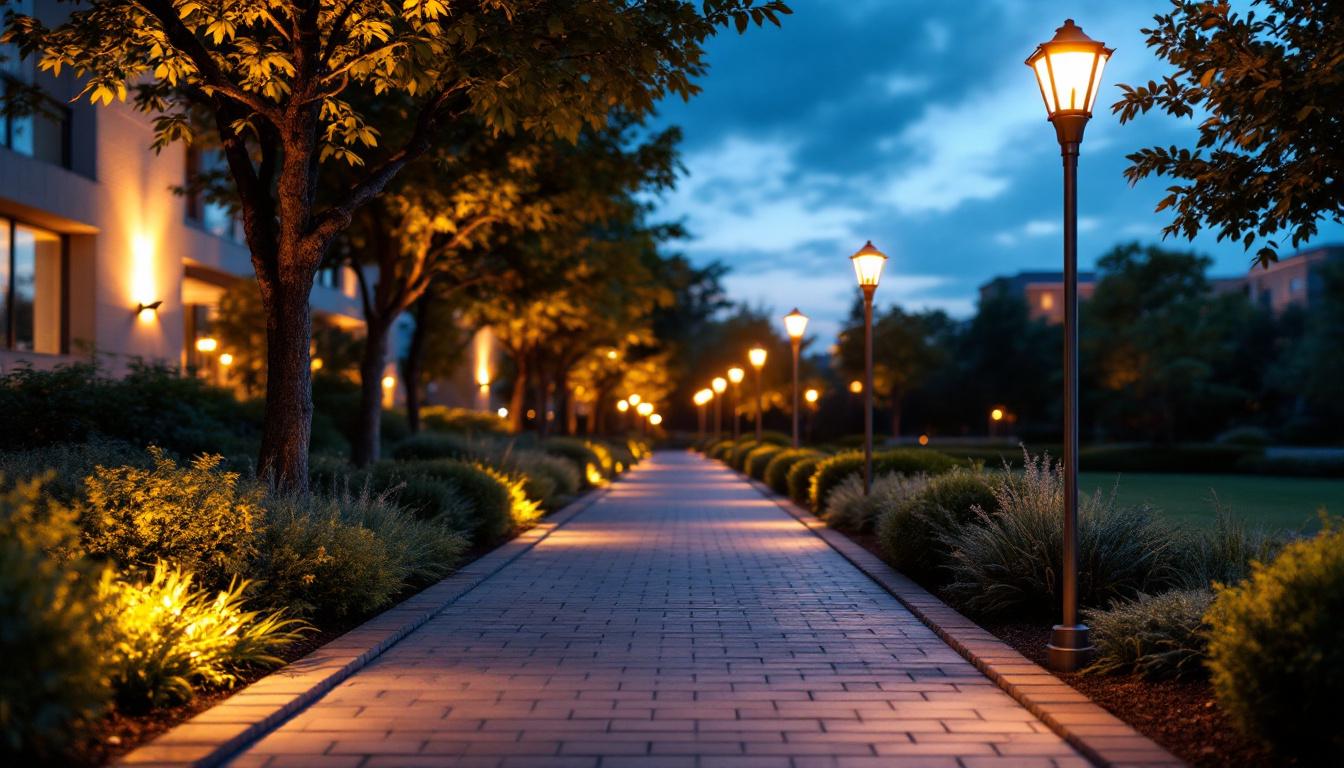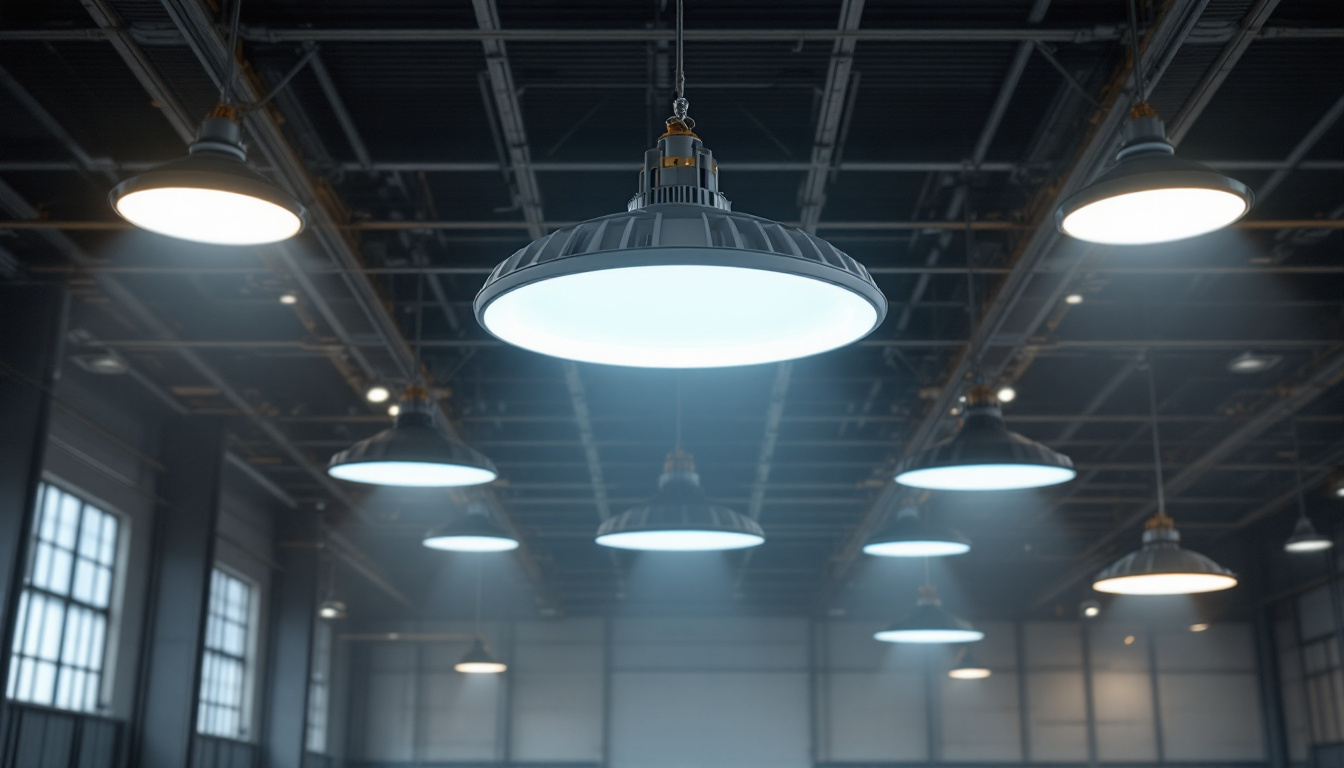
Outdoor lighting is an essential component of any landscape design, providing both aesthetic appeal and functional safety. Among the various aspects of outdoor lighting, walkway illumination often gets overlooked. This article delves into the significance of walkway lighting, its benefits, and how it can enhance the overall ambiance of outdoor spaces.
Walkway lighting serves a dual purpose: it enhances the beauty of outdoor spaces while ensuring safety for those navigating through them. Properly illuminated pathways can transform a mundane outdoor area into a welcoming and visually appealing environment.
One of the primary reasons for installing walkway lighting is to improve safety. Dark pathways can pose hazards, leading to trips and falls. Well-placed lights guide visitors along the path, reducing the risk of accidents. This is particularly important in residential areas, where families and guests frequently traverse outdoor spaces after sunset.
In commercial settings, well-lit walkways are equally crucial. They not only ensure the safety of customers and employees but also enhance the overall perception of the business. A well-lit entrance can create a positive first impression, inviting potential customers to explore further. Additionally, proper lighting can deter criminal activity, as well-lit areas are less appealing to those with ill intentions. This added layer of security can provide peace of mind for both business owners and patrons alike, fostering a sense of community safety.
Beyond safety, walkway lighting can significantly enhance the aesthetic appeal of outdoor spaces. Strategically placed lights can highlight landscaping features, such as flower beds, trees, or decorative elements, creating a visually captivating environment. This not only elevates the overall design but also adds value to the property.
Moreover, different lighting techniques can create various moods. Soft, warm lighting can evoke a cozy atmosphere, while brighter lights can create a more vibrant and energetic feel. Understanding these nuances allows lighting contractors to tailor their designs to the specific needs and preferences of their clients. For instance, using LED lights with adjustable brightness can provide versatility for different occasions, whether it’s a casual family gathering or a more formal event. Furthermore, incorporating smart lighting solutions can allow homeowners to control their outdoor lighting remotely, adjusting settings based on the time of day or specific events, thereby enhancing convenience and energy efficiency.
When it comes to walkway lighting, there are several types to choose from, each offering unique benefits. Understanding these options can help contractors make informed decisions that align with their clients’ needs.
Path lights are one of the most common types of walkway lighting. Typically installed along the edges of a path, these fixtures provide direct illumination to guide pedestrians safely. They come in various styles and heights, allowing for customization based on the landscape design.
LED path lights are particularly popular due to their energy efficiency and longevity. They provide bright illumination while consuming less power compared to traditional incandescent bulbs. This not only reduces energy costs but also minimizes maintenance efforts, making them an ideal choice for contractors and homeowners alike. Furthermore, many LED path lights are now available with adjustable brightness settings and color temperature options, allowing users to create the perfect ambiance for any occasion, whether it’s a cozy evening gathering or a festive outdoor party.
Step lights are another effective solution for illuminating walkways, especially in areas with stairs or uneven surfaces. These lights are typically installed directly into the steps or walls, providing subtle illumination that enhances safety without being overly intrusive.
In addition to their functional benefits, step lights can also add an aesthetic touch. With various designs available, they can seamlessly blend into the architecture of the home or landscape, creating a cohesive look that enhances the overall appeal of the outdoor space. Some step lights even come equipped with motion sensors, activating only when someone approaches, which not only conserves energy but also adds an element of security by illuminating the path when needed most. This feature can be particularly beneficial in residential areas where safety is a priority, ensuring that every step is well-lit and secure.
Recessed lighting offers a sleek and modern approach to walkway illumination. Installed flush with the ground or walls, these fixtures provide a minimalist look while effectively lighting the path. They are particularly suitable for contemporary designs, where clean lines and understated elegance are desired.
One of the advantages of recessed lighting is its versatility. It can be used in various outdoor settings, including patios, gardens, and pathways, making it a flexible option for contractors looking to create a cohesive lighting scheme throughout the property. Additionally, recessed lights can be integrated with smart home technology, allowing homeowners to control their lighting remotely via smartphone apps or voice commands. This not only enhances convenience but also provides an opportunity for energy savings, as users can easily adjust lighting schedules or turn off lights when they are not needed. The ability to customize lighting settings based on personal preferences or specific events can transform an ordinary walkway into a dynamic and inviting space, perfect for entertaining guests or enjoying quiet evenings outdoors.
Designing an effective walkway lighting plan requires careful consideration of several factors. By taking these elements into account, contractors can create a lighting scheme that is both functional and visually appealing.
The placement of lights is crucial for ensuring adequate illumination along the walkway. A common guideline is to space path lights approximately 6 to 8 feet apart, depending on the brightness of the fixtures and the desired level of illumination. This spacing helps create a continuous line of light that guides pedestrians safely along the path.
Additionally, it’s essential to consider the height of the lights. Taller fixtures can cast light over a broader area, while shorter ones provide more focused illumination. Balancing these factors will help achieve the desired effect while maintaining safety.
The color and temperature of the light can significantly impact the ambiance of the outdoor space. Warm white light (2700K to 3000K) is often preferred for residential settings, as it creates a cozy and inviting atmosphere. Cooler white light (4000K and above) may be more suitable for commercial areas, where brighter illumination is needed to enhance visibility.
Contractors should also consider the surrounding environment when selecting light colors. For example, warm lighting can complement natural materials like wood and stone, while cooler tones may work better with modern, sleek designs.
In today’s environmentally conscious world, energy efficiency is a significant consideration in lighting design. LED fixtures are an excellent choice for walkway lighting due to their low energy consumption and long lifespan. They not only reduce electricity costs but also contribute to a more sustainable lighting solution.
Incorporating smart lighting technology can further enhance energy efficiency. Features such as motion sensors and timers can help ensure that lights are only on when needed, reducing unnecessary energy use. This not only benefits the environment but also appeals to clients looking to minimize their carbon footprint.
While designing walkway lighting, there are several common pitfalls that contractors should be aware of. Avoiding these mistakes can lead to a more successful lighting project and increased client satisfaction.
One of the most frequent mistakes in walkway lighting is over-illumination. While it’s essential to provide adequate light for safety, too much brightness can create glare and discomfort. Striking the right balance is key to ensuring that the lighting enhances the space without overwhelming it.
Using dimmers or adjustable fixtures can help manage brightness levels, allowing for flexibility based on the time of day or specific events. This approach not only improves comfort but also extends the lifespan of the lighting fixtures.
Another common oversight is neglecting to consider the surrounding landscape features when designing walkway lighting. Failing to highlight trees, shrubs, or architectural elements can result in a lackluster appearance. Incorporating accent lighting to draw attention to these features can significantly enhance the overall visual appeal of the outdoor space.
Additionally, integrating lighting with the natural landscape creates a cohesive design that feels intentional and well-planned. This attention to detail can set a project apart and leave a lasting impression on clients.
Local regulations and guidelines regarding outdoor lighting should never be overlooked. Many municipalities have specific restrictions on light pollution, fixture types, and brightness levels. Ignoring these regulations can lead to fines and the need for costly adjustments after installation.
Contractors should familiarize themselves with local codes and ensure that their designs comply with all regulations. This not only protects the contractor’s reputation but also ensures that clients are satisfied with the final result.
Walkway lighting is often the missing piece in many outdoor lighting projects, yet its importance cannot be overstated. By enhancing safety, improving aesthetic appeal, and providing functional illumination, walkway lighting plays a vital role in creating inviting outdoor spaces.
Contractors should carefully consider the types of fixtures, design elements, and potential pitfalls when planning walkway lighting. By doing so, they can deliver exceptional results that meet their clients’ needs and exceed their expectations.
Incorporating walkway lighting into a larger outdoor lighting scheme not only enhances the beauty and functionality of the space but also contributes to a positive experience for all who traverse the paths. As outdoor lighting continues to evolve, embracing innovative solutions will ensure that walkway lighting remains a key component of successful lighting projects.
Ready to elevate your outdoor lighting projects with the perfect walkway solutions? At LumenWholesale, we provide contractors with the highest quality, spec-grade lighting products at prices that can’t be beaten. Say goodbye to local distributor markups and hello to a vast selection of reliable lighting that meets rigorous industry standards. With free shipping on bulk orders, you can get the premium lighting your projects deserve at the best value. Don’t let walkway lighting be the missing piece in your designs. Wholesale Lighting at the Best Value is just a click away. Enhance safety, aesthetic appeal, and functionality with LumenWholesale today.

Discover the essential insights on 8-foot LED lighting that every contractor needs to know.

Discover the ultimate guide to high bay light fixtures with our essential checklist tailored for lighting professionals.

Discover the pivotal role of diffuser lenses in lighting installations, exploring how they enhance illumination quality, reduce glare, and create ambient environments.

Discover how sensors for outdoor lights are revolutionizing the work of lighting contractors.